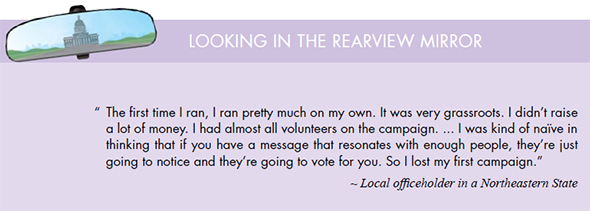Shifting Gears: How Women Navigate the Road to Higher Office
A national debate has sparked over the dearth of women in leadership positions. Are they held back by lack of ambition or disadvantaged by the existing political infrastructure? With more women greatly needed in public office, what can we do?
Download Full Report
The Driver or the Road?
Women are more than half of the US population but hold fewer than a quarter of all political offices. Moreover, their ascent to high office has slowed rather than accelerated. Parity asked: why the scarcity of female candidates and elected officials? Are they uninterested, unwilling, or uncertain? Is the political system unresponsive and impenetrable? Ultimately, is the issue the driver or the road?
In Shifting Gears, we explore how women build political careers, revealing that how a woman perceives the path to higher office influences not only her route but also her destination. The endless detours, potholes, and roadblocks put off many women who enter politics locally but ultimately choose not to continue the journey to top office.

Encouraging more women to run for House, Senate, and Governor, and providing them with opportunities to succeed, is critical to improving how our government works. This requires a greater emphasis on personal ambition and the removal of structures that reinforce women’s hesitation about political careers. By revealing roadblocks and promoting strategies to dismantle them, we can see more women in the driver’s seat on the road to higher office.
On the Road to the Capitol
Although women follow many paths to public office, we identify five major stages of candidate emergence and political career development. Beginning or completing any one stage does not imply that a candidate continues on to the next stage; in fact, many women who contemplate an initial run for office may never advance to later stages.
Key Survey Findings for Each Political Stage
Stage 1: Deciding to Run (or Not)
Stage 2: Campaigning While Female
Stage 3: Gender in Governing
Stage 4: Making a Bid for Higher Office (or Not)
Stage 5: Long-Term Planning: Viewing Politics as a Career
Shifting Gears: Points of Interest
On-ramps for Aiding Women Candidates
Pitfalls/Potholes Derailing Women Candidates
- Safety Risks for Candidates
- Safety Risks for Electeds
- Fear of Fundraising
- Political Pipelines/Male Networks
Strategies for Change/Action Steps
Download Full Report
